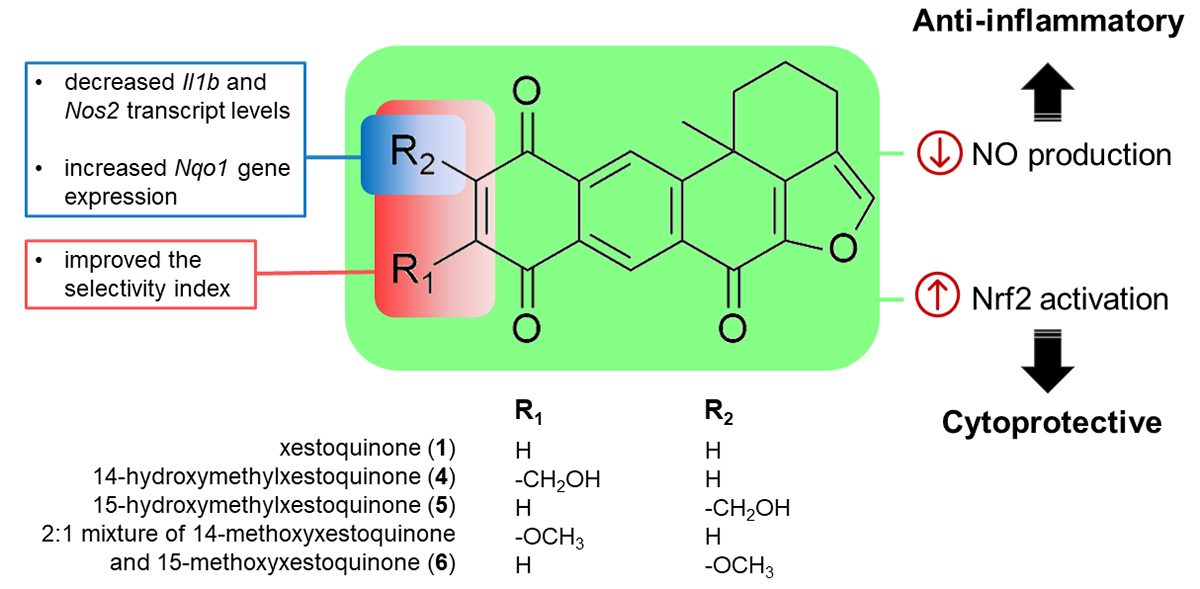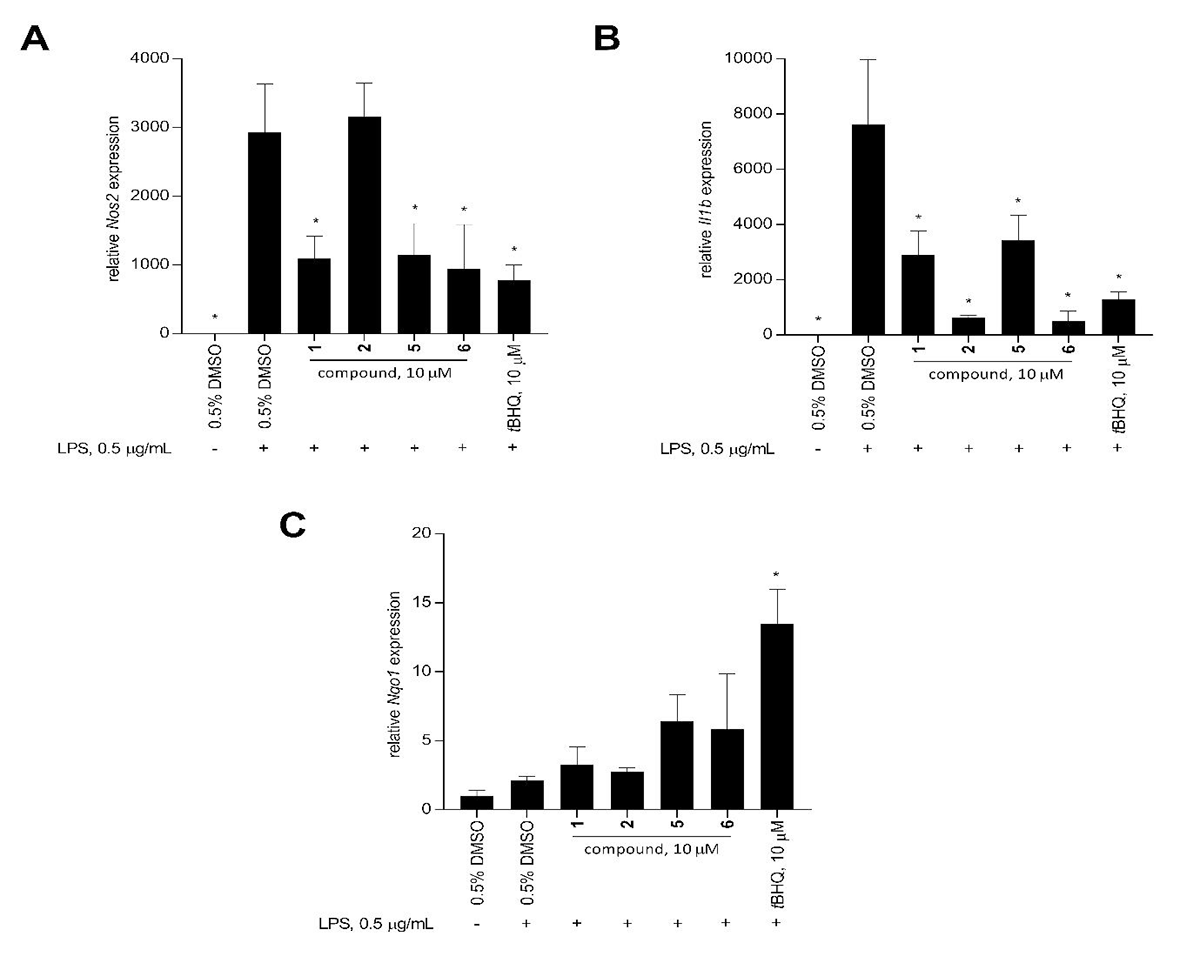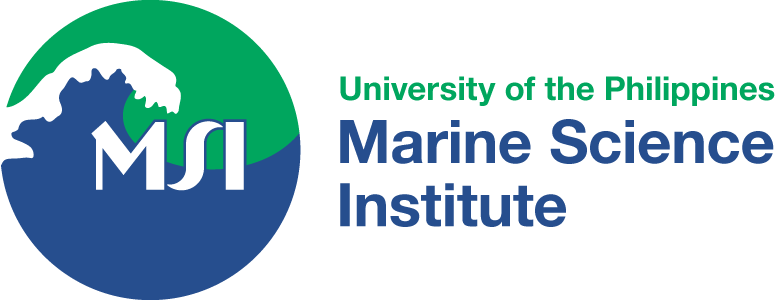Anti-Inflammatory Activity of Monosubstituted Xestoquinone Analogues from the Marine Sponge Neopetrosia compacta
Summary
In this study, we capitalized on the chemical diversity from Philippine marine sponges to discover anti-inflammatory compounds. The anti-inflammatory activity was evaluated in LPS-stimulated murine macrophage cells and an antiproliferative activity testing was also used as a counter-screen. This allowed for selecting priority extracts that decrease NO production in RAW 264.7 cells with minimal effects on the cell viability, hence, excluding promiscuous and non-selective agents. Screening and subsequent validation of the bioactivity identified a Neopetrosia compacta sponge as bioactive and the priority for purification. Bioactivity-guided purification afforded xestoquinone (1), and five analogues, namely adociaquinone B (2), adociaquinone A (3), 14-hydroxymethylxestoquinone (4), 15 hydroxymethylxestoquinone (5), and an inseparable 2:1 mixture of 14-methoxyxestoquinone and 15-methoxyxestoquinone (6). The mechanism of anti-inflammatory activity was evaluated using various cell-based assays. Xestoquinone and analogues (1–6) attenuated the NO production in a concentration-dependent manner in LPS-stimulated RAW 264.7 murine macrophage cells. The less studied monosubstituted derivatives 4–6 offer the advantage of lower toxicity and potent anti-inflammatory activity. Minor modifications in the quinoid moiety allow for the fine-tuning of the bioactivity of the xestoquinone family of compounds.
Significance
Chronic inflammation is recognized as a contributor to multiple chronic diseases, such as cancer, cardiovascular, and autoimmune disorders. Due to the side effects and toxicities accompanied with the intake of existing anti-inflammatory drugs, the discovery of compounds with unique target and/or mechanisms of anti-inflammation and with cytoprotective properties is very crucial. In this study, a natural products-initiated discovery of anti-inflammatory agents from marine sponges was undertaken. The study aims to expand the potential of xestoquinone and monosubstituted derivatives from Neopetrosia compacta as anti-inflammatory agents and Nrf2 activators. Structure-activity relationship shows that while the anti-inflammatory activity was unaffected by structural modifications in the para-quinone moiety, the monosubstituted analogues had significantly reduced cytotoxicity. The partial functionalization of the para-quinone moiety significantly improved the selectivity of the monosubstituted analogues of xestoquinone. The anti-inflammatory activity and Nrf2 activation by xestoquinone and monosubstituted derivatives were correlated to the downregulation of the pro-inflammatory Nos2 and Il1b genes, leading to a decrease in NO production. Hence, xestoquinone and monosubstituted derivatives can be used as drug leads to develop more effective anti-inflammatory and cytoprotective drugs with reduced unwanted effects. Moreover, the compounds could be structurally modified to generate less cytotoxic compounds with increased potency and selectivity.
Photos


Authors:
Shalice R. Susana (Marine Science Institute, University of the Philippines)
Lilibeth A. Salvador-Reyes (Marine Science Institute, University of the Philippines)
Read the full article: https://doi.org/10.3390/antiox11040607
